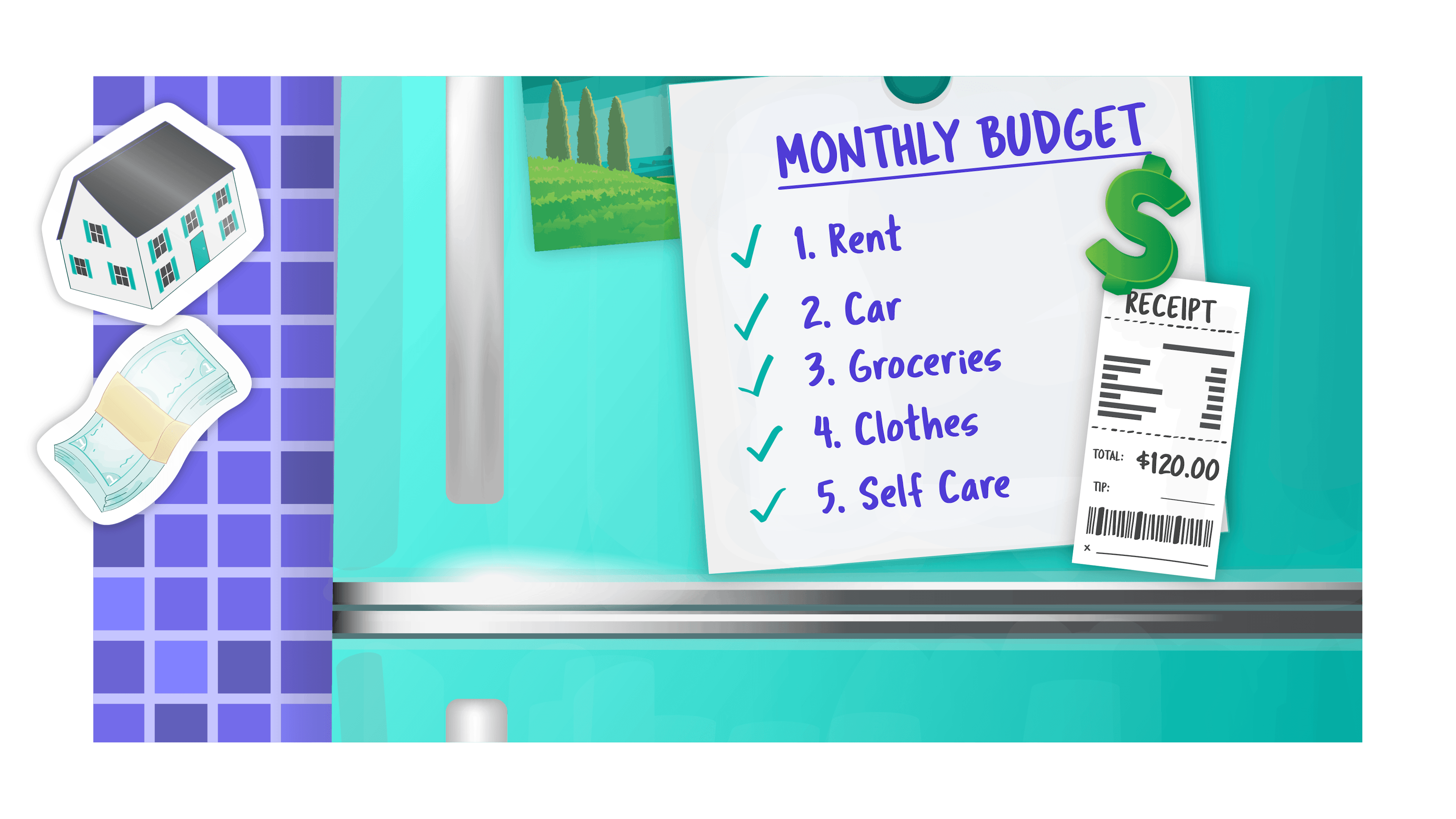The Story
You know you need one. We're talking about the B word — aka budgeting. But a recent survey found that 26 percent of Americans don’t routinely follow a budget. It may not be a hot topic, but it's far and away the MVP of financial wellness. We teamed up with Fidelity to help you build your B from the ground up.Put me in, coach.
First, get real about your money. You can't create a budget that works until you take a hard look at your income and expenses. After taxes and payroll deductions (like health insurance premiums and 401(k) contributions that are automatically cut from your paycheck), see how much cash you actually bring in every month. Now tally up all your monthly bills and subtract the total from your income. If you're seeing red, you've probably been relying on credit to cover the gap. Oops. Done. What’s next?
Check out your bank statements and look at where your money is going. You're bound to find wasted spending somewhere (looking at you, subscription service you forgot to cancel). The good news is that it should quickly reveal expenses you can get rid of.Got it. But I still have bills to pay.
Same. First, get them organized. Your bills should fall into these categories:
Essential expenses: These are bills you have to pay to live — rent, utilities, cell phone, debt payments, you get it. Fidelity says this category shouldn't eat up more than 50 percent of your income. Rule of thumb is to keep your housing expenses at or below 30 percent of your take-home pay.
Variable expenses: A catch-all for most other spending. Eating out, shopping, entertainment, etc. all fall under this umbrella.
Financial goals: This bucket is for your longer-term money goals, like kicking into your emergency fund or setting money aside for your next vacation. Retirement savings and extra debt payments can go here, too (more on that later). A worthy goal is for this part of your budget to eventually make up 20% of your pay. Think: 15% for retirement and 5% for short-term savings and unplanned expenses. We’ll clue you in to where the rest of your money should go in a minute.
Got it? Cool, now let's unpack the category that tends to carry the most weight: Your financial goals.
Ready for it.
Big picture money goals look different for everyone. Some might be dreaming of paying off their credit card debt or putting money down on a house. Others may be wanting to start a family – and budgeting for baby can mean more than a new nursery. Egg freezing or in-vitro fertilization (IVF) comes with a big price tag whether your insurance helps or not (think: harvesting your eggs can cost anywhere from $10,000 to $12,000 and IVF can cost upwards of $20,000 per cycle). It's really all about what matters to you — and making sure you're getting there one step at a time.
But what if I want the world?
It’s ok to dream big. You can work toward multiple goals at once. Start by coming up with a timeline and target number for each one. Then break that down into a monthly savings amount that you treat as a regular line item on your budget. Done and done.
Ok. I know what I want. How do I get there? Choose your own budgeting adventure. And pick a style that feels right to you. There's no one right or wrong way to budget, so settle on a method that meshes best with your personality. Here are a few of the more popular styles:
The 50/20/30 budget: 50 percent of your income goes to essential expenses, 20 percent for financial goals, 30 percent for flex spending.
The 50/15/5 budget: And now, for something (not) completely different. This super specific 50/20/30 has half your take-home pay going toward essential expenses, 15 percent towards retirement, and 5 percent for short-term savings. (Check out this break down.) You can earmark the other 30 percent for variable expenses, aka treat yourself in moderation.
The zero-sum budget: Every time you get paid, give every dollar a job. Aka put certain amounts toward specific expenses. Write it all down and make sure you’ve spent everything you take home. It's all about "spending" every last dollar smarter.
I think I’m all set.
Hold up. No matter how you budget, retirement should be in the mix. Enter investing. It’s an easy way to grow your cash over the long haul so you can comfortably peace out on the workforce when the time is right. Interested. Tell me more. FYI, it goes beyond kicking into your 401(k). Investing can help you reach all sorts of big money goals faster, from saving for a down payment for a house to putting money together for your kids’ college. Because parking your money in an ordinary savings account and earning a one percent return isn't going to get you very far. Pair investing with all-star budgeting and you've got yourself a solid financial game plan. FYI, Fidelity's no-nonsense approach to investing is a great way to get started. Check it out.
theSkimm
Effective budgeting translates to freedom. Whether this is new news or old news, there’s always room to grow and make your money work smarter. Happy Independence Day from your financial struggles.
Subscribe to Skimm Money
Your source for the biggest financial headlines and trends, and how they affect your wallet.






